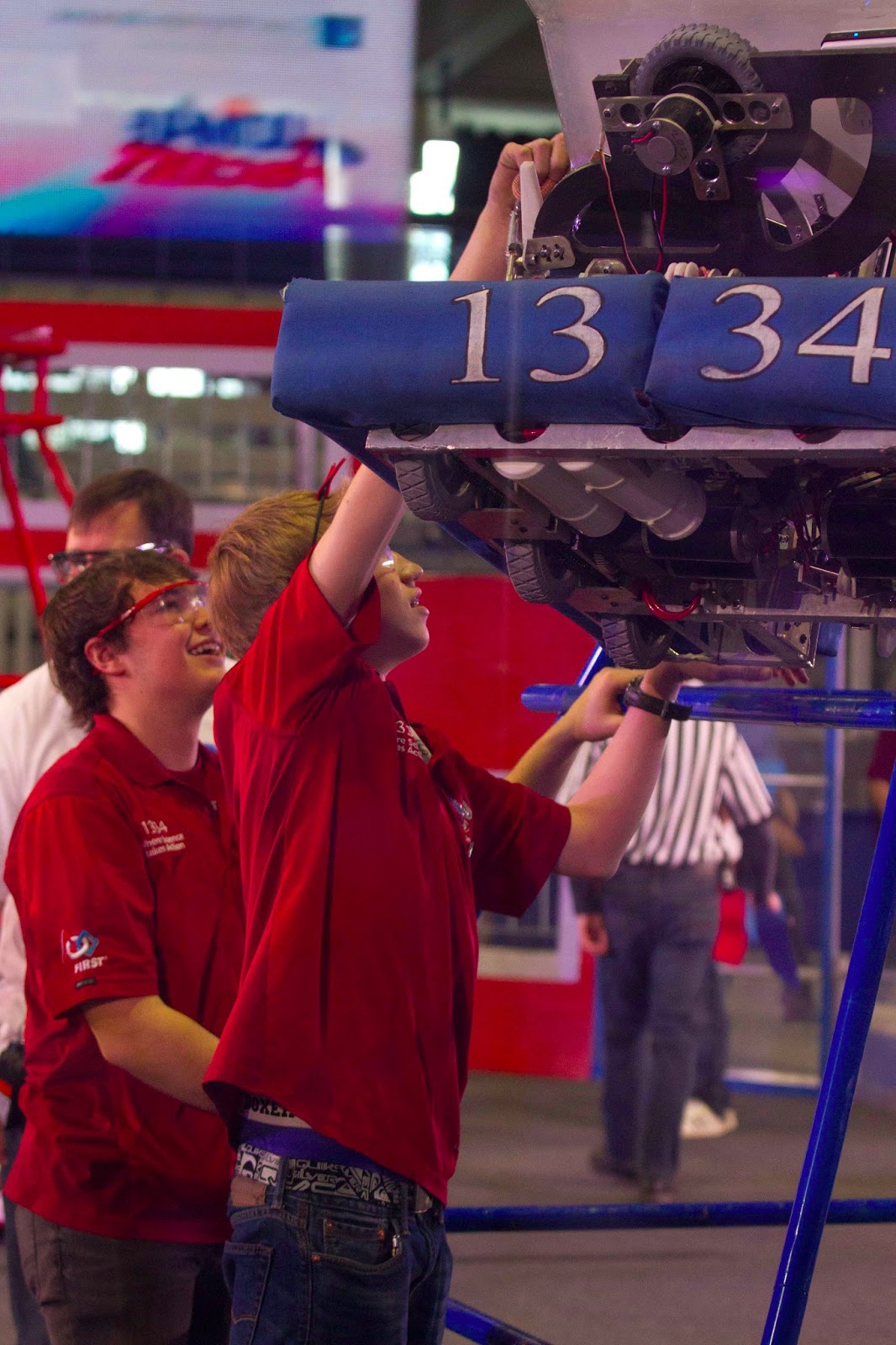In early April, teams from a number of high schools gathered in Calgary at the University of Calgary to test their robot design and construction skills. These teenagers came from Mexico, Brazil, USA, and across Canada. The competition, organized by NASA, was only one stage in essentially a world wide competition that was to culminate in finals in the US later in the year. They had been given limited amount of time to design a robot that could shoot frizbees through a goal and ultimately climb a structure. The teams were given a set of rules that constrained the level of direct engagement by the kids while the robot was operating, and the specific actions the robot had to be able to accomplish, but outside of these constraints, the kids were free to configure the robot as they saw fit. As a result, no two robots were alike.
The teams placed their robot onto the game field, where the competition was started by the robots - with no external guidance - shot the loaded frizbees at the goals. This phase of the competition was followed by the kids remotely controlling the robots, reloading them, and shooting towards the goal. At any time, six teams competed, with three assigned blue, and three red. The team groupings rotated throughout the day, ensuring a thorough mixing the participants.
The teams had varying levels of experience and expertise. As a result, some teams were less successful with their designs. The more experienced teams were often found to be helping the others. It was a very supportive environment.
The MC warming up the crowds and competition.
The initial autonomous phase where the robots shot without being controlled.
A peek along the bank of controllers.
Diversity was clearly evident. This woman was acting as a ref. There were a number present in addition to the judges
The frizbees were loaded into the robots using slots in the field boards. THe robots could also pick up the frizbees, but I did not notice many with this ability.
A rack of frizbees was present at each loading area. The coloured frizbees could be thrown by the participants during the final seconds of a competition, and if they hit the goal they would gain additional points.
A frizbee scoring a point. There were five goals at each end of the field, plus a "frizbee golf" goal at the top of the structure.
The teams were very vocal.
Judges - pre competition. All volunteers, and very enthusiastic. MAny were senior management from a number of large corporations.
Watching the autonomous phase competition.
The Brazilian team moving their robot into position.
Once up, the robot had to be helped down. There was only one robot that could climb to the top of the structure.
The local police brought in their robots - less the weaponry.
All competitions need a competition good luck charm.
Closer look at one of the robots. THe use of the wheels to energize the frizbees was a common feature.
A better look at the structure and goals.
The robots took many different forms.
As did the audience.
The University had their solar car on display.




























Comments
Post a Comment